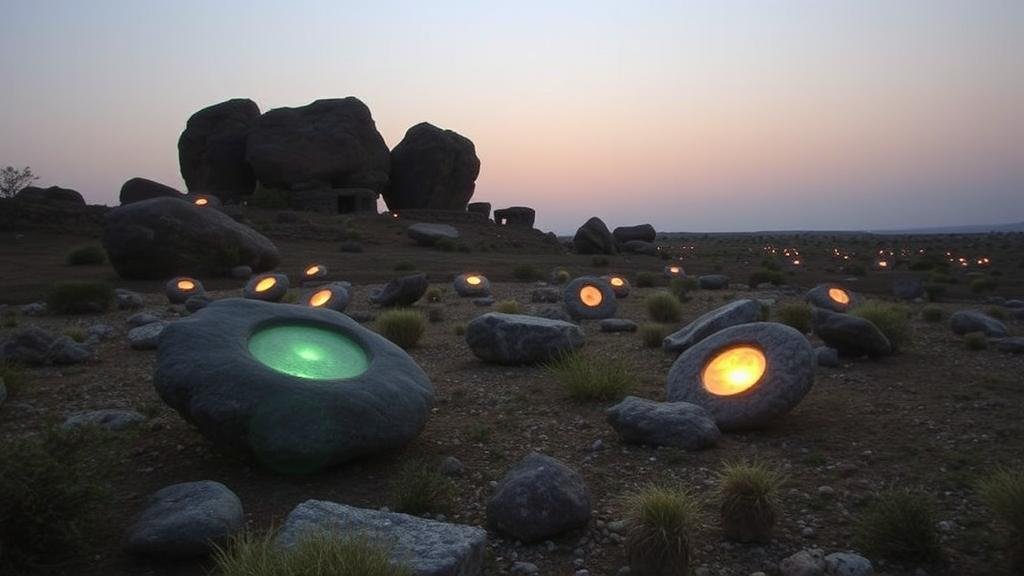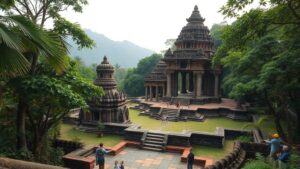Investigating the “Valley of the Hidden Suns,” a site in Africa where reflective stones mimic solar light.
Investigating the Valley of the Hidden Suns
Located in the heart of Africa, the Valley of the Hidden Suns is a site of stunning natural beauty and geological wonder. This captivating area is characterized by its reflective stones, which mimic the light of the sun, creating a surreal visual experience. Scholars and adventurers alike are drawn to this site, not only for its unique appearance but also for the scientific and cultural implications that accompany it. In this article, we will delve into the geology, significance, and mysteries of this remarkable valley.
Location and Geography
The Valley of the Hidden Suns is situated in the northeastern region of Namibia, near the border of Botswana. Surrounding it are towering granite formations and expansive savannah landscapes, which contribute to the valleys enchanting allure. The reflective stones, known as eroded quartzite, can be found predominantly in this valley. r luminescent qualities arise from a high concentration of silica, which reacts to sunlight and moonlight, creating an illusion that resembles thousands of miniature suns scattered across the ground.
The Science Behind the Illumination
Geologically, the Valley of the Hidden Suns is a site of ancient rock formations, estimated to be over 200 million years old. The quartzite stones found here reflect light due to their unique crystalline structures. When sunlight hits these stones, it refracts through the layers of silica, resulting in a shimmering effect that can dazzle observers. This phenomenon has led scientists to study the areas geology extensively, revealing not only the age of the rocks but also insights into the Earths historical climate patterns.
Historical Significance
Historically, the valley holds a rich tapestry of stories from local tribes, who have long revered the area as sacred. The indigenous San people consider the valley a place of spiritual importance, believing that it is a realm where ancestors reside. Folklore tells of the Sun Dancers, mystical beings who are thought to bring light to the valley during the night, enhancing its ethereal glow. e narratives offer a glimpse into the cultural significance and the reverence with which the indigenous population regards this peculiar landscape.
Modern Exploration and Tourism
In recent years, the Valley of the Hidden Suns has become a focal point for eco-tourism. Adventurers and researchers flock to the site to witness the stunning optical display and to engage with local cultures. According to a report from the Namibian tourism board, visits to the valley have increased by 30% over the past five years, demonstrating a growing interest in off-the-beaten-path destinations that offer both natural beauty and unique experiences.
Environmental Considerations
While tourism can bring economic benefits, it is essential to balance this with environmental stewardship. reflective stones are delicate, and excessive foot traffic can damage these geological treasures. Efforts made to promote sustainable tourism practices, such as guided tours that limit visitor numbers and educational programs that emphasize the importance of preserving the valley’s natural resources.
Real-World Applications and Future Research
The unique qualities of the Valley of the Hidden Suns present opportunities for various fields of study, including geology, environmental science, and cultural anthropology. Researchers are investigating the potential of these stones to inform renewable energy solutions, given their capacity to maximize light reflection. Plus, the valley offers a natural laboratory for studying climate change effects on geological formations, making it an attractive site for ongoing research.
Conclusion and Actionable Takeaways
The Valley of the Hidden Suns is not just a visual spectacle; it is a site where science, culture, and the environment converge. As visitors explore this enchanting landscape, they are reminded of the delicate balance between nature and human impact. To support the preservation of this natural wonder, consider the following:
- Participate in eco-friendly tours that emphasize sustainable practices.
- Engage with local guides to learn about the historical and cultural significance of the valley.
- Support preservation initiatives that aim to protect the unique geology and ecology of the region.
In summary, the Valley of the Hidden Suns invites us to marvel at the beauty of nature, while also encouraging a deeper understanding of our responsibility to protect such extraordinary environments for future generations.



